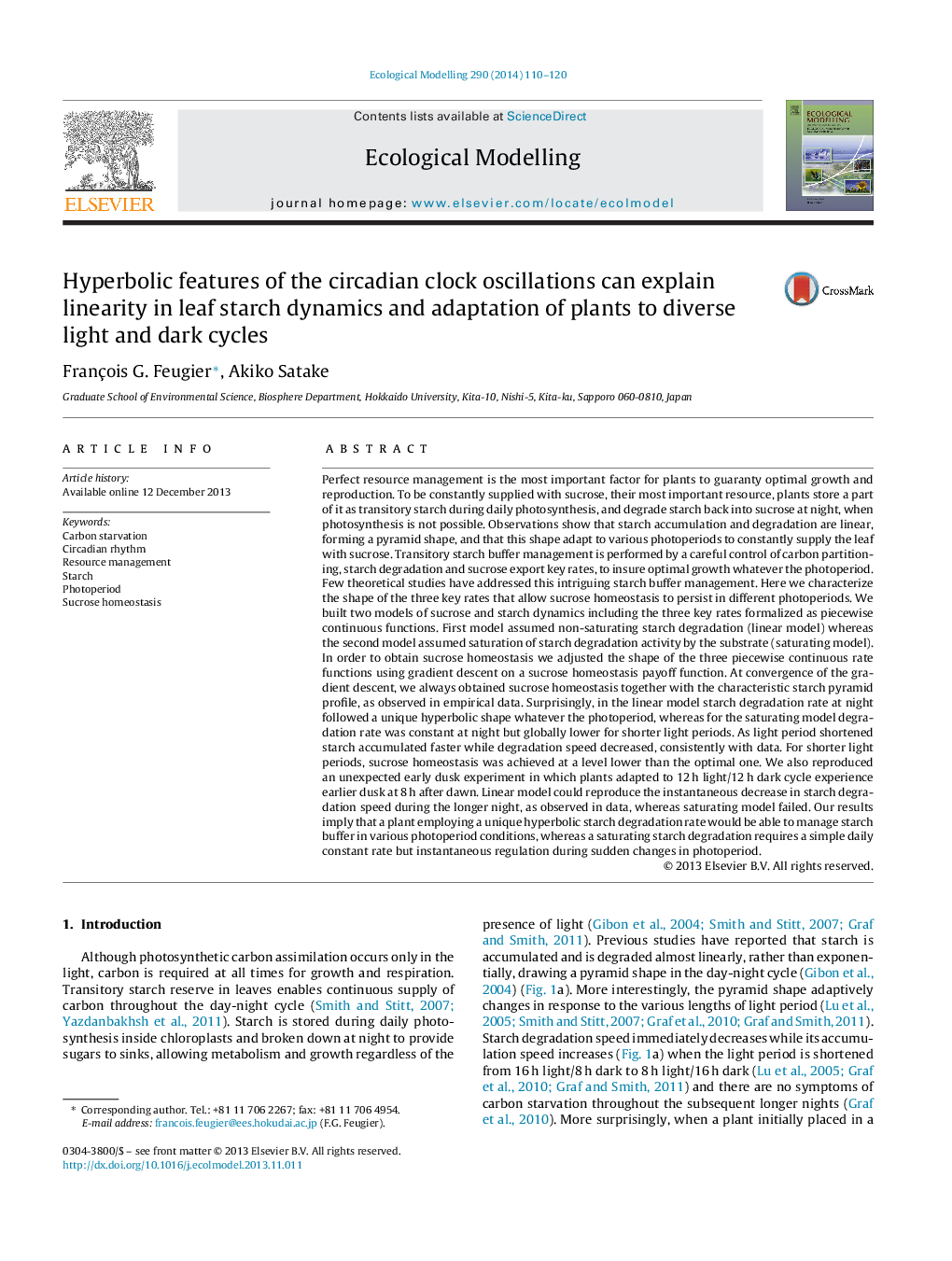| Article ID | Journal | Published Year | Pages | File Type |
|---|---|---|---|---|
| 4375848 | Ecological Modelling | 2014 | 11 Pages |
•We build two models to understand starch management in plant leaves.•Models contain sucrose, starch dynamics and three unknown metabolic rate functions.•Key rate functions are searched by optimization to obtain sucrose homeostasis.•Results match observations: linear starch profiles, photoperiod adaptation.•Emergent hyperbolic features of starch degradation rate resemble circadian clock.
Perfect resource management is the most important factor for plants to guaranty optimal growth and reproduction. To be constantly supplied with sucrose, their most important resource, plants store a part of it as transitory starch during daily photosynthesis, and degrade starch back into sucrose at night, when photosynthesis is not possible. Observations show that starch accumulation and degradation are linear, forming a pyramid shape, and that this shape adapt to various photoperiods to constantly supply the leaf with sucrose. Transitory starch buffer management is performed by a careful control of carbon partitioning, starch degradation and sucrose export key rates, to insure optimal growth whatever the photoperiod. Few theoretical studies have addressed this intriguing starch buffer management. Here we characterize the shape of the three key rates that allow sucrose homeostasis to persist in different photoperiods. We built two models of sucrose and starch dynamics including the three key rates formalized as piecewise continuous functions. First model assumed non-saturating starch degradation (linear model) whereas the second model assumed saturation of starch degradation activity by the substrate (saturating model). In order to obtain sucrose homeostasis we adjusted the shape of the three piecewise continuous rate functions using gradient descent on a sucrose homeostasis payoff function. At convergence of the gradient descent, we always obtained sucrose homeostasis together with the characteristic starch pyramid profile, as observed in empirical data. Surprisingly, in the linear model starch degradation rate at night followed a unique hyperbolic shape whatever the photoperiod, whereas for the saturating model degradation rate was constant at night but globally lower for shorter light periods. As light period shortened starch accumulated faster while degradation speed decreased, consistently with data. For shorter light periods, sucrose homeostasis was achieved at a level lower than the optimal one. We also reproduced an unexpected early dusk experiment in which plants adapted to 12 h light/12 h dark cycle experience earlier dusk at 8 h after dawn. Linear model could reproduce the instantaneous decrease in starch degradation speed during the longer night, as observed in data, whereas saturating model failed. Our results imply that a plant employing a unique hyperbolic starch degradation rate would be able to manage starch buffer in various photoperiod conditions, whereas a saturating starch degradation requires a simple daily constant rate but instantaneous regulation during sudden changes in photoperiod.
